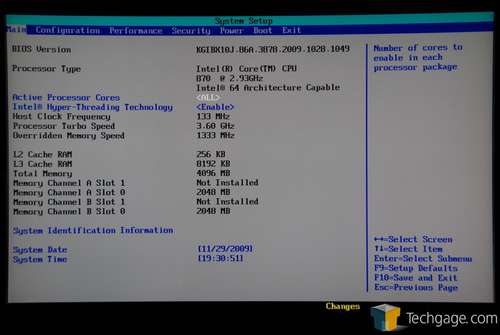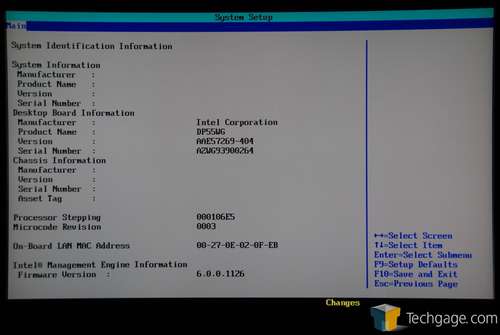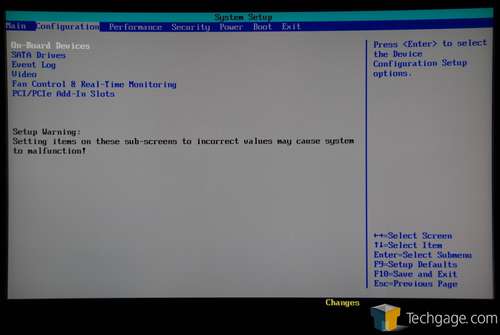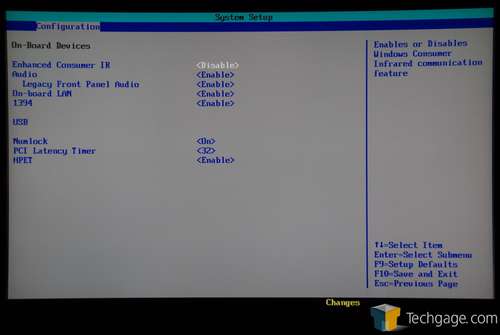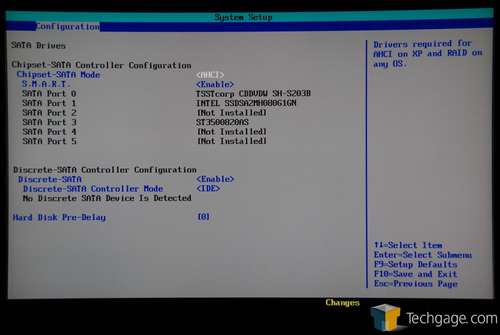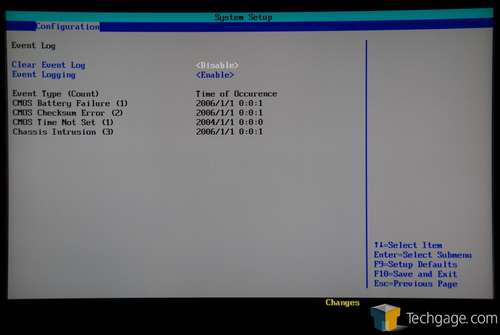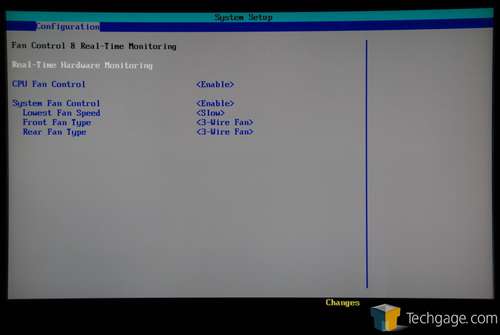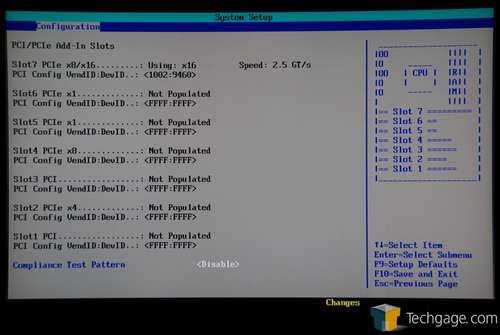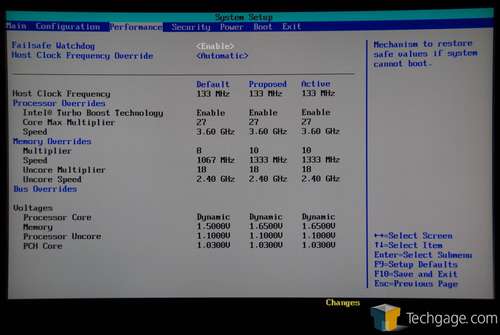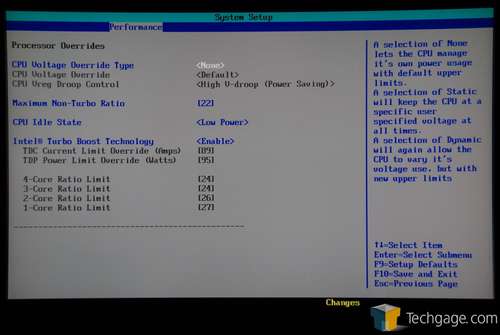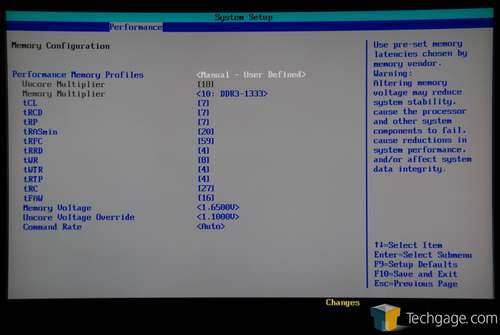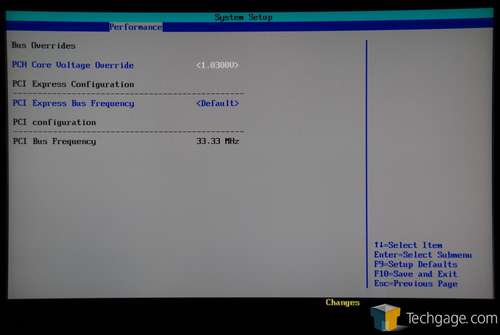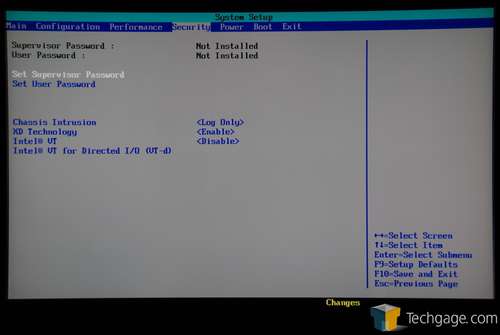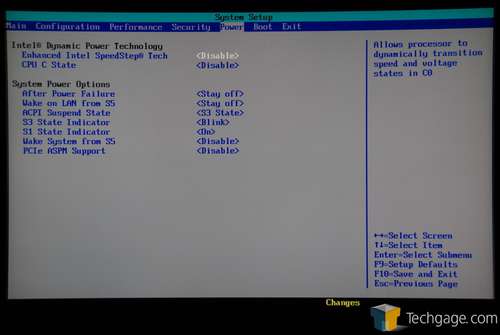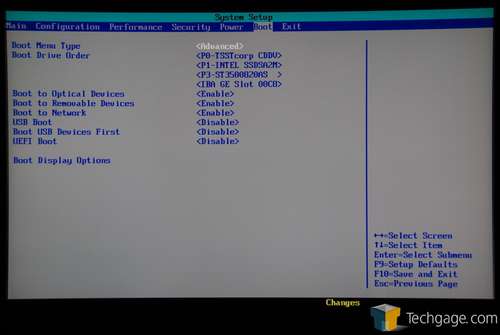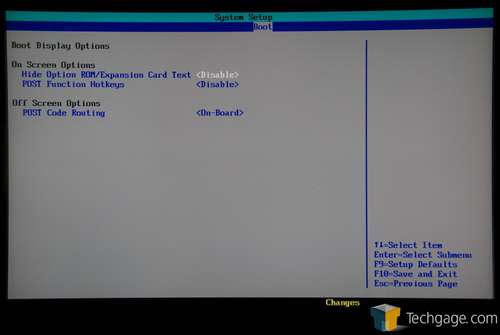- Qualcomm Launches Snapdragon 4 Gen 2 Mobile Platform
- AMD Launches Ryzen PRO 7000 Series Mobile & Desktop Platform
- Intel Launches Sleek Single-Slot Arc Pro A60 Workstation Graphics Card
- NVIDIA Announces Latest Ada Lovelace Additions: GeForce RTX 4060 Ti & RTX 4060
- Maxon Redshift With AMD Radeon GPU Rendering Support Now Available
Intel DP55WG
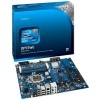
For most consumers, Intel might not be the first name to come to mind when building a new PC, but the company offers a rather robust line-up of boards for each chipset it releases. We’re looking at the $140 “mainstream” DP55WG, which has an simple overall feature-set, but includes support for IR and also NVIDIA’s SLI.
Page 2 – Look at the BIOS
In my review of Gigabyte’s P55A-UD4P last week, I mentioned that while in the past, I didn’t quite enjoy using the BIOSes that the company puts together, things have improved drastically over the course of the past year. In the case of Intel’s BIOSes, though, I don’t think my opinion will ever change, because as long as I’ve been using the company’s boards, nothing has changed. I didn’t like the BIOSes the company used four years ago, and I still don’t like them today.
I’ll give Intel one thing… the BIOSes it uses are unique… they’re not a Phoenix, or an Award… they are an Intel BIOS. But as far as I’m concerned, being unique isn’t always for the best (my lack of friends proves this!). Companies like ASUS, Gigabyte and others have put many man-hours into understanding what makes a BIOS easy to use, and enjoyable to use by the end consumer. Intel seems to just throw together something that works, and there is a difference.
Like most of the BIOSes found on ASUS motherboards, Intel’s has a top-mounted list for each section. I do like this scheme a lot more than others, but the problem here is that switching from menu to menu is an ugly experience. The menu itself has to refresh each time you switch to a new one, which means there’s a delay… it’s not instantaneous like most other BIOSes out there. The same can be said for simply moving up and down through the menus… it’s clunky.
Like its boards, Intel keeps things very simple in the BIOS, but not so simple that overclockers would shun it like the plague. What’s absolutely needed is found here, including voltage control over the memory, CPU and PCH, and a full slew of memory timings to choose from as well.
It might not be the most exciting BIOS around, but the one here suffices. Going through it just once for the initial setup isn’t fun, so as you can imagine, overclocking or tweaking with it is even less fun. I do hope to see Intel do a total revamp over its BIOSes in the future, but I can’t see that happening until the company begins building boards designed for enthusiasts and overclockers, which also, I cannot see happening. As mentioned earlier, Intel values stability above all, and typically, overclocking doesn’t equate with stability.
Support our efforts! With ad revenue at an all-time low for written websites, we're relying more than ever on reader support to help us continue putting so much effort into this type of content. You can support us by becoming a Patron, or by using our Amazon shopping affiliate links listed through our articles. Thanks for your support!




